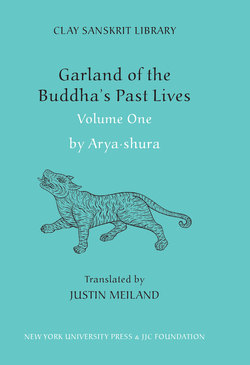Читать книгу Garland of the Buddha’s Past Lives (Volume 1) - Aryashura - Страница 15
На сайте Литреса книга снята с продажи.
Оглавлениеthe Jatakamala and the Paramitasamasa suggest different authorship.
If we limit our investigation to the jatakamala, Arya·shura’s doctrinal affiliations are also unclear. On the whole, the text seems to express mainstream Buddhist values without subscribing to the philosophy of any particular school. One sole verse mentions the term “supreme vehicle” (yana/vara), which may tempt the interpretation of a Mahayana affiliation (1.41 [28]). This, however, is debatable. Not only would one expect a more clear expression of Mahayana partisanship than this single indirect allusion, but also the term “supreme vehicle” seems merely to refer to the Bodhi·sattva path to perfect Buddhahood (sometimes described as buddha/yana), which, as explained above, is a spiritual career accepted by all Buddhist traditions, not only by the Mahayana. That yana/vara need not have Mahayana connotations is further illustrated by the Mahavastu (2.46), a non-Mahayana text, which uses the synonymous term yana/srestha to refer to the path to Buddhahood (Senart 1882–97) Indeed, contrary to common impressions, the use of the word yana to refer to a path to awakening is not restricted to the Mahayana but is found in non-Mahayana texts such as the *Mahavibhasa, which on more than one ocassion refers to the notion of three yanas.10
The fact that the first thirty stories of the Jatakamala seem to be structured around the three perfections of giving, virtue, and forbearance also need not imply a Mahayana affiliation. While it is true that these moral qualities correspond to the first three of six perfections listed in some Mahayana texts, the Sarvasti·vadins, an influen- ________
